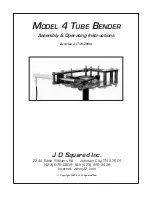
EATON
Torque Limiting Coupling Installation, Operation and Maintenance Manual E-MEQD-II002-E September 2015
13
Caution
Do not attempt to use a solvent to remove oil or
grease from the drum surface without first removing
the TLC element.
Caution
Do not use compressed air to blow dust
accumulations out of the backing plates. Although
the friction material does not contain asbestos,
the dust from the operating environment, may irritate
the respiratory system.
4.1.1.3 Air control components - Check for proper
adjustment of the air control components. Make
sure the safety pressure switches are set correctly
and are functioning properly. Repair any air leaks
as discovered.
4.1.2
Partial or complete disassembly is required to inspect
the following items.
4.1.2.1 Drum diameter wear - Check the O.D. of the drum
and compare to the values shown on Table 5. Minor
heat-checking may be removed by machining the
drum O.D. If the drum has been subjected to
excessive heat, the open end may flare out, giving
the impression that the drum has not worn. It is
therefore important to check the diameter at
several locations across the face.
Caution
Operation of the TLC element on a drum that is
worn, or has been machined to less that minimum
allowable diameter will result in damage to the
element components.
4.1.2.2 Air actuating tube – Occasionally check that
the actuating tube has not hardened or (aged)
beyond a durometer reading in excess of 72
Shore A. Also if any portion of the tube is hardened
in several areas over the recommended reading the
tube must be replaced. Also check for any blisters or
bubbles which would indicate ply separation. A tube
in this condition must also be replaced.
Caution
When working with any friction material always wear
approved safety equipment.
4.1.2.4 Uneven friction lining wear - Tapered wear across
the friction surface typically indicates a worn drum
and/or misalignment. If two or more adjacent shoes
are worn on one end only, the air actuating tube
has most likely developed a ply separation at
that location.
Torque Limiting Coupling
4.1.2.5 Backing plate wear - Wear on the ends of the
backing plates from bearing against the side plates is
indicative of misalignment or thrusting. If wear is on
one end only, and uniform for all backing plates,
a worn drum may be causing the shoes to thrust as
the element engages. If wear exists on both ends of
all of the backing plates, excessive misalignment is
probably the cause. Slight notching in the torque bar
cavity is normal; however, if the notching occurs in a
short amount of time, check shaft alignment. If both
walls in the torque bar cavity are notched, there may
be a significant vibration (torsional) problem.
Note: The number preceding the letters “TLC” in the
element size designates the original drum diameter in inches.
Example: 51TLC1200 - Original drum diameter =
51.00 inches (1295 mm).
Minimum allowable drum diameter is:
51 inch (1295 mm) - 0.25 (6.35mm)=
50.75 inch (1289.05 mm).
4.1.2.6 Release springs and torque bars - Excessive wear
at the ends of the torque bars where the release
springs make contact indicates excessive
parallel misalignment.
4.1.2.7 Contamination of friction shoes – Friction linings
which have become contaminated by oil or grease
etc. must be replaced. Also, linings that might
have been charred from excessive slipping
must be replaced.
Caution
When using any solvent, always follow the
appropriate safety precautions.
4.1.2.8 Excessive dust accumulation - If dust becomes
packed in the backing plate cavities, a pressurized
enclosure should be considered. Excessive
accumulations will prevent complete
shoe retraction.
Table 5
Drum wear limits
Element
Max. allowable wear on drum
size
diameter inch (mm)
51TLC1600
.25 (6,35)
60TLC1600
.25 (6,35)
66TLC1600
.25 (6,35)
76TLC1600
.25 (6,35)
76TLC2000
.25 (6,35)






































